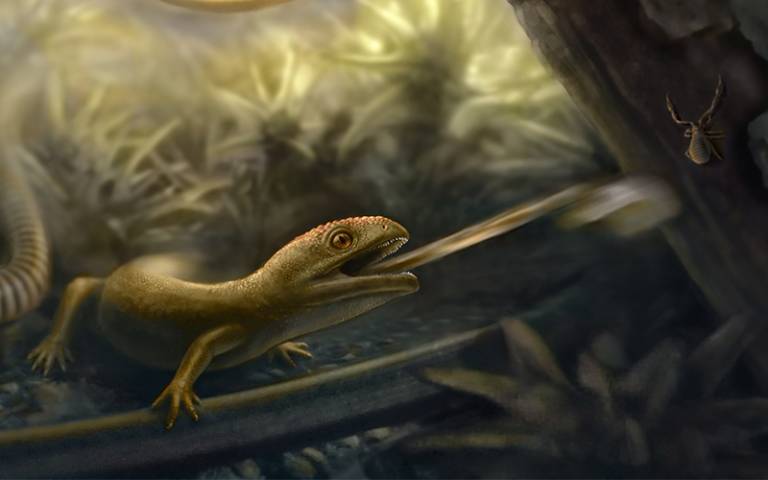Earliest example of a rapid-fire tongue found in extinct amphibians
6 November 2020
Fossils of small armoured amphibians provide the oldest evidence of a slingshot-style tongue, according to a new study co-led by a UCL Faculty of Life Sciences researcher.

The research team analysed 99-million-year-old fossils to find that the animals were sit-and-wait predators that snatched prey with a projectile firing of their tongue, as reported in the journal Science.
Despite having lizard like claws, scales and tails, the ancient animals, knowns as albanerpetontids, were amphibians, not reptiles. Their lineage was distinct from today’s frogs, salamanders and caecilians and dates back at least 165 million years, dying out only about 2 million years ago.
The new findings redefine how these tiny animals are believed to have fed, as they were previously thought to be underground burrowers.
The fossils are the first albanerpetontids discovered in modern-day Myanmar and the only known examples in amber. Most albanerpetontid fossils are in poor condition, yet one specimen was in ‘mint condition’, say the researchers, enabled them to thoroughly investigate it. They conducted CT scanning, revealing fine-scale features obscured in the cloudy amber.
The fossil also represents a new genus and species: Yaksha perettii.
Co-author Professor Susan Evans (UCL Cell & Developmental Biology) said: “If the earliest albanerpetontids also had ballistic tongues, the feature has been around for longer than the earliest chameleons, which likely date back to 120 million years ago. Other fossil evidence suggests albanerpetontids were around at least 165 million years ago, but potentially more than 250 million years ago, so it could be that ballistic tongues have been around for 100 million years longer than previously thought.”
 Close
Close

